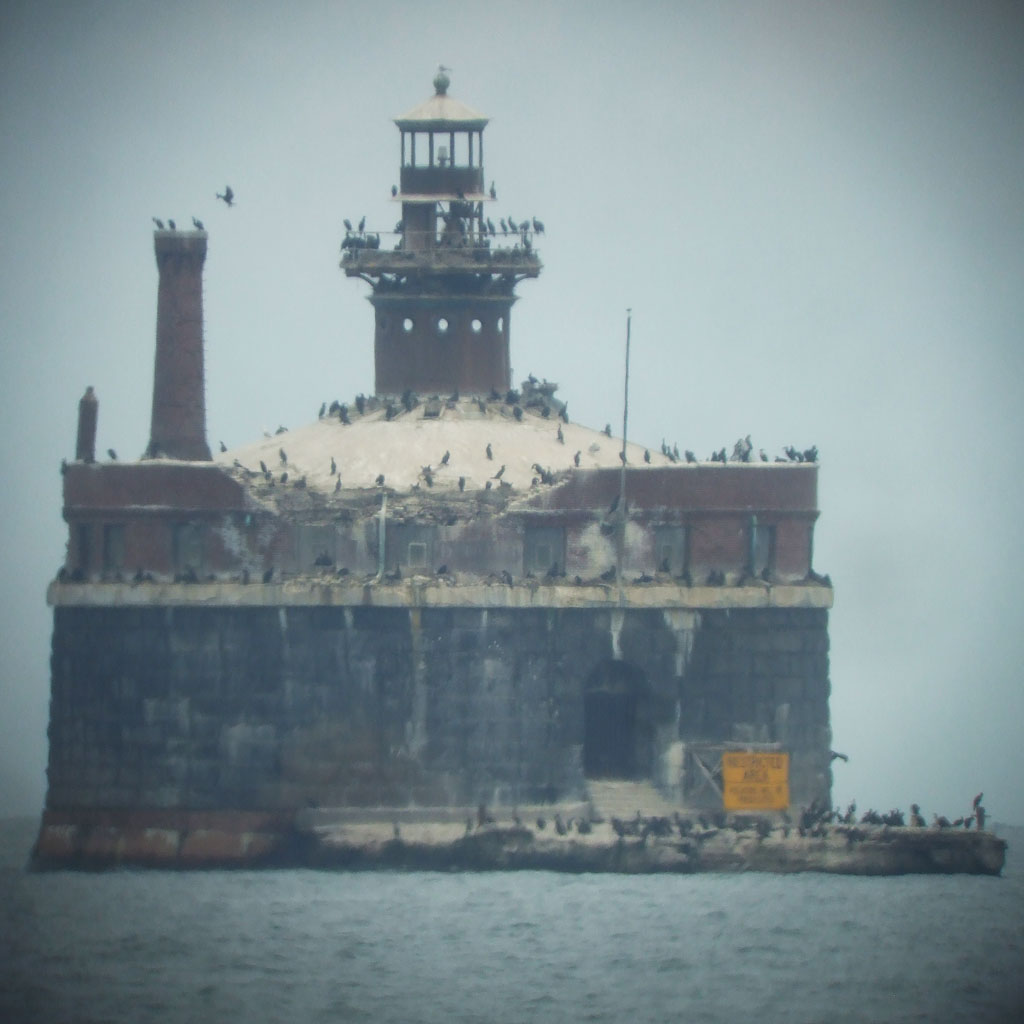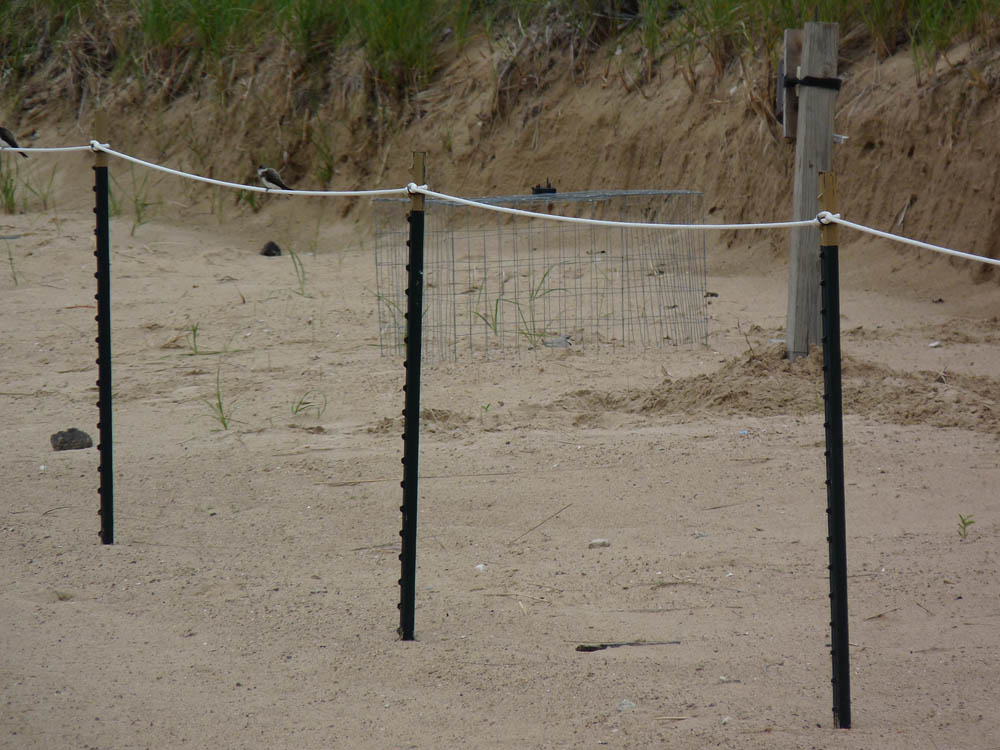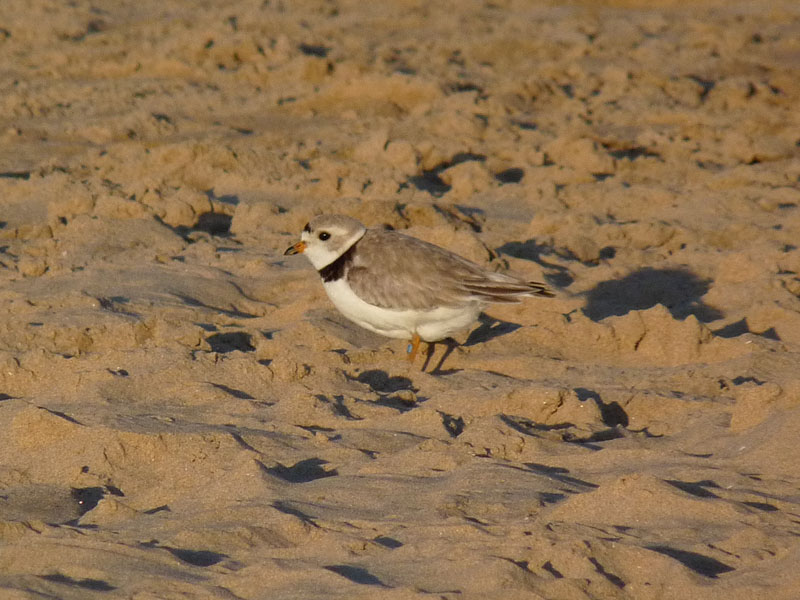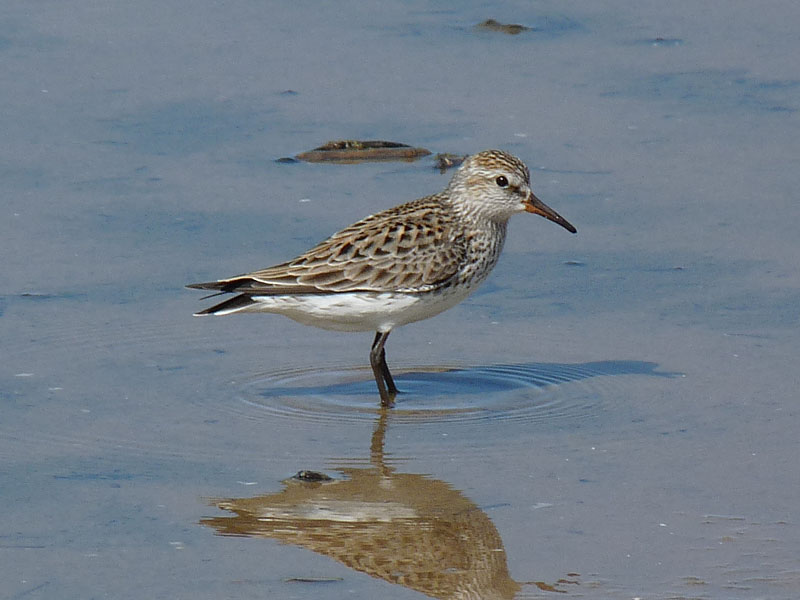If you’ve been to Montrose you’ve probably noticed the structure due east on the horizon that looks like it’s floating on Lake Michigan. This is the Wilson Avenue Crib and it was part of the water distribution system for Chicago. The cribs pump water to the filtration plants, also along the lakefront. The filtration plants purify the water and distribute it to the city and nearby suburbs for consumption. The Wilson Avenue Crib is no longer operational but several species of birds are making good use of it. The dark shapes in the photos are Double-crested Cormorants and they nest on the crib. State endangered Peregrine Falcons have also nested there.
I took this photo with my digital camera and Questar telescope in June 2019, a technique known as digiscoping. To read more about how I digiscope, see the Digiscoping with a Questar page on my main birding website, The Orniphile. The Wilson Avenue Crib is about 2 miles offshore.




